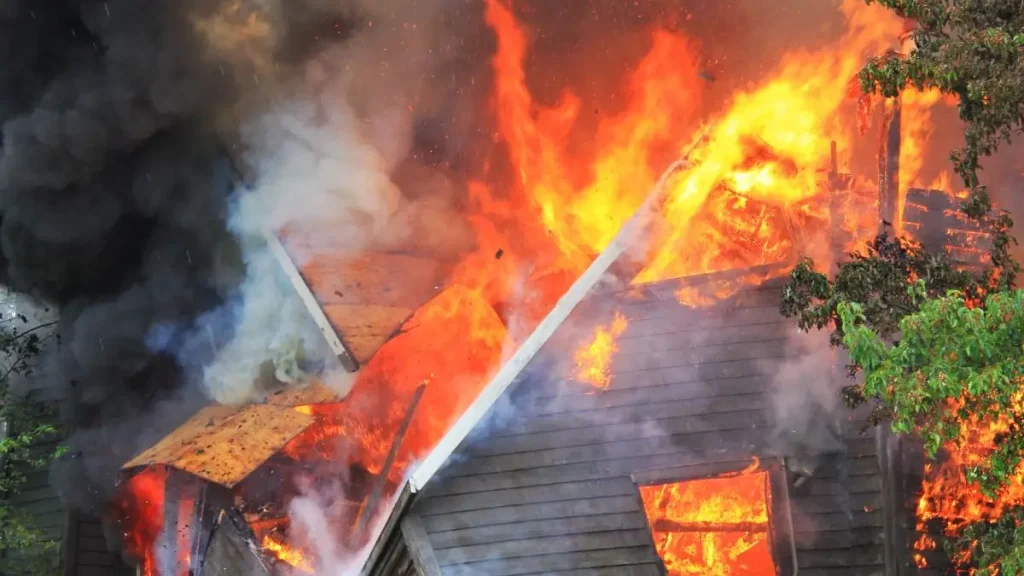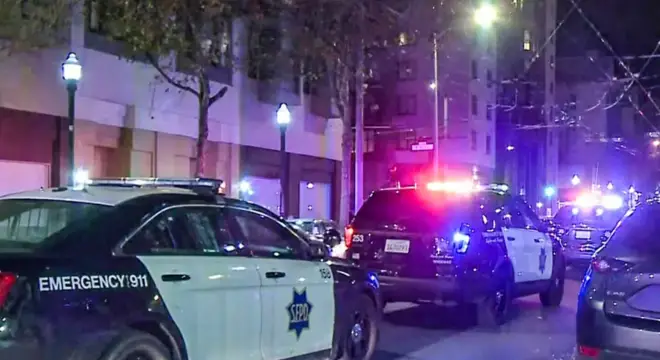House Fire Breaks Out in Delaware, Investigation Launched
I came across the alert Monday evening—there was a fire on River Road in Sussex County, and it wasn’t a small one. The Blades Volunteer Fire Company was the first to respond, and when they arrived, the home was already burning fast. That moment when firefighters pull up to a fully involved structure… it’s not just about saving a building anymore—it’s about keeping everyone around it safe.
The call came in on July 28. A quiet residential stretch suddenly turned chaotic. You could imagine the smoke visible from blocks away. Crews didn’t wait. They moved in with backup from neighboring stations—Seaford, Laurel, Bridgeville, Greenwood, and Delmar. That kind of turnout doesn’t happen unless the situation demands serious manpower. Fire attack, ventilation, setting up water supply—it was all hands on deck.
It took them roughly two hours to get the flames under control. That’s a long time in fire terms. A lot can be lost in two hours.
How close have you or someone you know ever come to a home fire? Let me know in the comments—these stories hit closer to home than we realize.
Multi-Agency Response Showed Just How Fast Things Escalated
If you’ve ever seen multiple fire trucks from different towns pull up to the same street, you know it’s serious. That’s exactly what happened on River Road.
When the initial crews from Blades arrived, the fire was already moving. Not just a room or a corner of the house—the structure was involved. They didn’t try to tackle it alone. Within minutes, backup rolled in from Seaford, Laurel, Bridgeville, Greenwood, and Delmar. These are all separate fire departments, but when it comes to protecting lives, they operate like one team.
Each unit had a job. Some were on the attack line, others handled water supply, others worked ventilation. I’ve spoken with volunteer firefighters before—they train for this kind of coordination. Two hours. That’s how long it took to finally contain it. In firefighting, that’s a battle.
And for a house fire to demand that kind of team effort? That tells you how quickly it could’ve spread—maybe to the neighbors, maybe even into the surrounding woods if the wind had picked up.
Cause Still Unknown—But Fire Marshal’s Investigation Is On

Here’s where things get a little frustrating: we still don’t know what started the fire. And we might not for a while.
The Delaware State Fire Marshal’s Office is officially investigating the cause. That’s standard, but it’s not always quick. According to WBOC, they’ve confirmed the investigation is active. But beyond that, details are limited.
Now, I know what you’re thinking—how does a fire like this even begin? An electrical fault? A kitchen accident? Something worse? I get it. But fire marshals don’t guess. They go room by room, trace burn patterns, analyze appliances, and rule things out methodically. And that takes time.
What you can do while we wait is this: look around your own space. Electrical cords, overloaded outlets, heat sources—fires often come from everyday stuff we ignore. This one might’ve started the same way.
A similar case happened recently in East Charlotte, where the cause of a serious home fire is still being reviewed, reinforcing just how unpredictable these incidents can be.
Sussex County Has Seen Fires Like This Before—and That’s the Problem
This isn’t an isolated story. I’ve followed similar cases in Sussex County over the past year, and the patterns are hard to ignore.
In Seaford just a few months ago, another home caught fire under still-unclear circumstances. There were smoke alarms, but the damage was still serious—half a million dollars lost, and a family displaced. Then in Milton, two homes were destroyed on the same day. The cause? Also under investigation.
That’s the part that gets to me. We hear “under investigation” so often, but rarely see what the conclusions were. Maybe because fires like these don’t always have a clean answer.
But what you and I can take from this is the pattern. Most of these fires are in residential areas. Older homes, older wiring. Lots of dry material—mulch, attic insulation, overworked air conditioning units in the summer. The spark might be different, but the fuel is almost always the same.
Have you seen similar incidents in your area? Or maybe experienced one yourself? Share your thoughts in the comments—real stories help us all stay more alert.
What Firefighters Actually Do in These High-Stakes Moments?
Let me take you behind the scenes for a second. Because most people hear “firefighters responded” and imagine a few hoses spraying water. It’s way more than that.
In a case like this, here’s how the timeline usually works:
The first truck pulls in and sizes up the fire. A second crew starts looking for people inside. At the same time, someone else is setting up a water relay—especially critical in rural or semi-rural areas where hydrants might be scarce.
In this case, according to the Blades Volunteer Fire Company, all of those steps were handled across multiple crews. That coordination? It only works because these departments drill for it. Volunteers, mind you—not paid city crews. These are your neighbors. Your local mechanics, electricians, delivery drivers—dropping everything to show up.
If nothing else, I think that deserves our respect. And maybe next time you see your local firehouse hosting a fundraiser, you’ll know exactly where that money goes.
Stories like the one in Plainville where a firefighter tragically lost his life during a house fire are a reminder of just how high the stakes are when crews arrive on scene.
What You Can Actually Do to Prevent This at Home?

Let’s be real—reading about someone else’s house catching fire always feels distant… until it’s not. That’s why I always say: don’t just scroll past stories like this—use them. Because most house fires? They don’t start with something dramatic. They start with the everyday stuff around you right now.
Start with smoke detectors. I know, I know—basic, right? But I’ve walked into so many homes where the batteries are dead or removed completely. Working smoke alarms cut the risk of dying in a house fire in half. If you rent, check with your landlord. If you own, set a reminder every six months.
Then there’s the wiring. If you’ve got extension cords running under rugs, overloaded outlets, or old appliances that spark when you plug them in—you’re sitting on a hazard. And summer makes it worse. AC units, fans, and dehumidifiers are all pulling heavy loads.
A few more things I’d recommend, especially after reading fire reports from Delaware Fire Marshal’s Office:
- Don’t store mulch or dry yard debris too close to your foundation.
- Have a family escape plan. Two exits from every room. Practice it.
- And if your home doesn’t have a residential sprinkler system? Consider at least installing one in the kitchen.
Most people only think about this stuff after a fire. You and I can flip that. Start now—just one safety fix this week can make a real difference.
I’ve seen some solid home safety checklists and real-time fire alerts shared on WhatsApp lately—might be worth browsing a few if you’re the type who likes quick, no-nonsense updates.
What Happens Next—and What You Should Watch For
So, where does this story go from here? That’s what I always ask once the smoke clears.
Right now, the Delaware State Fire Marshal’s Office is investigating the cause. But they rarely release findings within days. Sometimes it takes weeks. They’re thorough—and they have to be. If it was an electrical fault, arson, or even a freak accident, it’ll come out eventually. But don’t expect a big headline follow-up unless it’s something criminal.
That said, you don’t have to wait. Here’s what I’d do:
- Keep an eye on official Facebook pages like Blades Volunteer Fire Company or Seaford VFD—they post quicker than the news.
- Set up a Google Alert for “Delaware State Fire Marshal River Road” so you get updates automatically.
- Follow local reporters covering fire incidents—sometimes they tweet small updates that never make it to articles.
Also, if you live nearby or know someone who does—talk to them. Fires like this have ripple effects. A neighbor might’ve seen something. A smoke alarm might’ve failed. And sometimes, these details never make it to a press release, but they change how the rest of us prepare.
In some cases, the consequences are far more devastating—like this Maine house fire where one person was found dead inside, showing how fast things can turn tragic.
Final Thoughts
When I think about what happened on River Road, I don’t just see burned walls or emergency lights—I see a wake-up call. These fires don’t announce themselves. They don’t wait for you to be ready. And by the time you hear the sirens, it’s already too late to prepare.
So if you’ve made it this far, don’t let it stop at reading. Take five minutes today to check a smoke detector. Walk through your home like an inspector would. Ask yourself: if it were my house last night, would I have made it out safely?
Because it’s not about fear—it’s about being smart. You owe that to yourself, and the people you live with.
For more real-life fire stories and safety insights, visit our website Build Like New. It’s where you’ll find breakdowns, expert advice, and true events you can actually learn from.
Disclaimer: This article is based on publicly available reports and local news sources at the time of writing. Investigation details may change as new information is released. Always refer to official updates from the Delaware State Fire Marshal or local fire authorities for the most accurate guidance.


